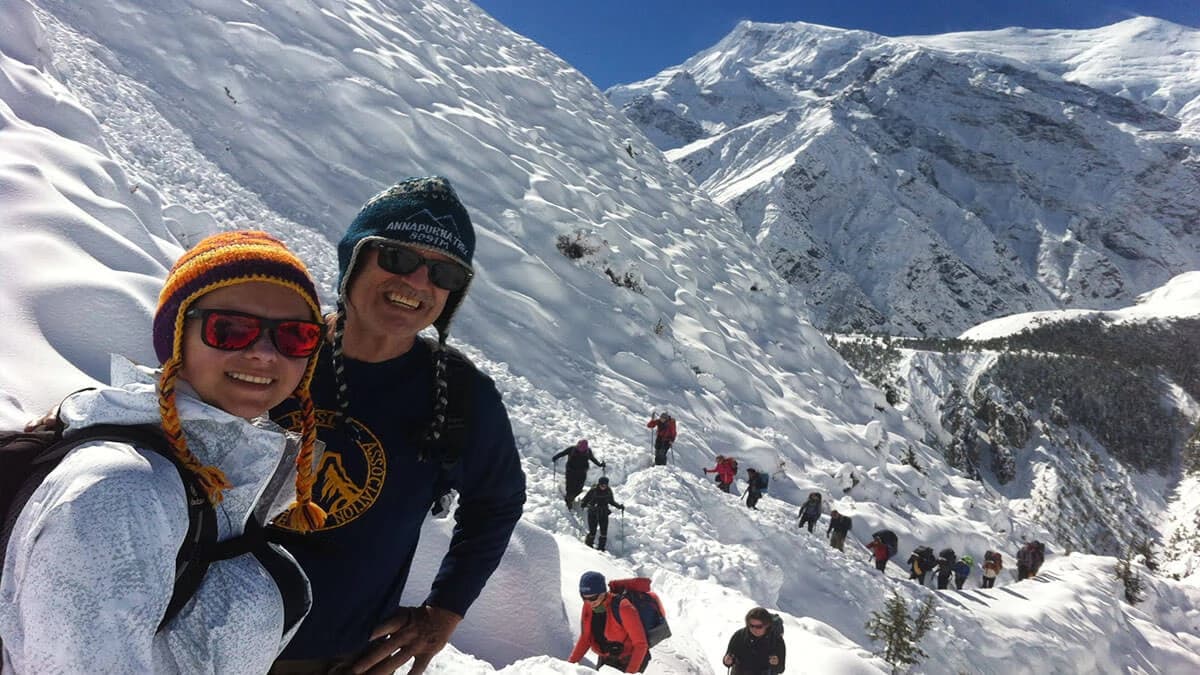Winter Trekking in Nepal
Many trekkers, guides, and locals think it is not a good idea to travel to higher altitudes mid-winter trekking in the Himalayas during its peak winter months between December and February. This is because many high passes are covered with snow, making it seem impossible to take these routes for some time. However, trekking in the Himalayas is absolutely possible even during winter and is expected in standard routes with proper preparation without the high passes cross.
Trekking in higher altitudes during the cold season does not need special training or equipment. All that is required is proper clothing to keep one warm and to go. However, trekking would be fantastic even at altitudes higher than 5,000 meters if you are appropriately geared up for the situation.
Daytime is pretty warm, with mostly sunny days throughout the season. Nights get pretty cold once the 3,000m altitude is crossed. Lodges in most trekking routes are open even in winter and provide warm indoors with heating systems. The temperature outside can drop to minus 30 degrees. However, the kitchen area is kept pretty warm with traditional heaters. A good down jacket, sleeping bag, gloves, warm headgear, and warm socks would be mandatory to bear with the cold.
Higher altitudes bear strong winds and sun rays, which can quickly show their impact on the skin. Proper sun protection is essential; sunscreen and sunglasses could be your lifesavers. Trekking poles are beneficial for all seasons but more effective in winter. Washing and laundry can be handled once at warmer, lower altitudes.
Trekking Route: This can be done in the Himalayas in winter.
A plausible factor that most people worry about winter trekking in the Himalayas is snow. It blocks up many passes and sends people temporarily living in higher altitudes to their warmer residences in the lowlands. Weather tracking may be inaccurate or unreliable, and trekkers in this season have to keep an eye on any clouds that build up as this could be potential snowfall. A few rest days would be the most viable alternative in this case. However, most winter days are clear, which makes for a good time to trek otherwise. Choosing the winter trek with our high pass cross would be rewarding. Thus, one can do the Everest base camp , Annapurna Sanctuary, or Annapurna Panorama Trek without any problem.
Indeed, the benefit of trekking this season is the low density of travelers. Most prefer to travel in peak seasons between October-November and April-May, so the well-trailed routes are often crowded. So trekking the same path during mid-winter could give you the advantage of less crowded trails and lodges with quick services and many choices. In addition, the view from higher elevations is straightforward and rewarding. Many trekkers have enjoyed their travels to Annapurna, Langtang, Everest, and other popular destinations this season. You can plan yours as well!





